VAEEC 2016 Letter to State Corporation Commission in support of Washington Gas Light Company’s energy efficiency programs.
Chelsea Harnish, Executive Director
Virginia Energy Efficiency Council
March 8, 2016
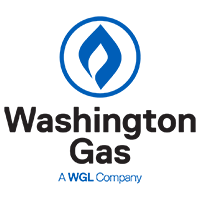
On behalf of the Virginia Energy Efficiency Council, I am pleased to submit comments in support of the application by Washington Gas Light Company (“WGL”) to amend its Conservation and Ratemaking Efficiency Plan (“CARE”) under Case No. PUE-2015-00138.
WGL’s CARE program has provided Virginia ratepayers with cost-effective energy efficiency programs since its inception in 2010. WGL’s proposed amendment to its CARE Plan for 2016-2018 will offer expanded energy efficiency opportunities that will result in real benefits to Virginia residents. With projected lifetime savings of over 15.6 million therms, the proposed energy efficiency programs will not only provide economic and environmental benefits, but will give consumers greater awareness and ability to manage their energy usage, which will lead to increased implementation of energy efficiency technologies and practices all while lowering their utility bills.
We are encouraged by WGL’s innovative portfolio of residential programs, which are designed to reach a broader base of customers across the Commonwealth, including a residential equipment program, online audits, low-income audits and weatherization. In addition, WGL is proposing an expanded home energy reporting program that will provide residents with actionable information and personalized tips for reducing gas usage, while also cross-promoting and connecting residents with the other programs available to them. WGL’s approach to its residential efficiency programs will result in greater customer education and engagement that will deliver measurable and verifiable benefits across a broad and diverse set of its customers.
Please accept this letter of support for WGL’s amendment application for its CARE Plan. I sincerely hope the Commission approves the amended CARE Plan as a prudent use of ratepayer funds. If you have any questions, please contact me.
March 2016 Testimony of Chelsea Harnish to the SCC
Virginia State Corporation Commission
March 8, 2016
Good morning members of the Commission. My name is Chelsea Harnish and I am the executive director of the Virginia Energy Efficiency Council (VAEEC). The VAEEC is a broad coalition that works to assess and support programs, innovation, best practices and policies that advance energy efficiency in Virginia while providing a forum for stakeholder interaction. Before joining the VAEEC, I was the energy campaigns manager for the Virginia Conservation Network.
My working experience has given me an acute awareness and understanding of the energy and conservation challenges the Commonwealth faces, and I am here to support Dominion’s efforts.
The lowest cost electricity is the electricity consumers don’t use. Energy efficiency programs help consumers reduce their consumption, thereby providing a cost-effective energy source.
These utility programs will also help the commonwealth meet its voluntary goal of reducing retail electricity consumption by 10 percent by 2020.
For residents, there is great value in Dominion’s proposed Residential Programmable Thermostat Program. In addition to the rebate customers will receive for the purchase and installation of the WiFi thermostat, the most beneficial takeaway is the usage data that will provide useful information back to consumers about their consumption patterns, including volume and peak usage times, which can in turn inform smarter consumer decisions.
Extending the expiring Air Conditioning Cycling Program, which pays participants $40 a year to agree to have their air conditioning units cycle during peak summer days, is also imperative for Virginia. While I don’t have stats on the success of the program, I do know that having consumers cycle their air conditioning during peak demand is one way our utilities’ providers can help manage through high peak periods.
On the business side, the Small Business Improvement Program will be an important addition to Dominion’s efficiency portfolio because it focuses on a market that is traditionally difficult to reach through efficiency programs. The program will allow participating businesses to update aging energy systems with more cost-efficient versions at a fraction of the cost. Updating infrastructure will allow businesses to save money by operating more efficiently and potentially allow them to reinvest those savings to grow their business.
On behalf of the Virginia Energy Efficiency Council, I sincerely appreciate the opportunity to support these practical yet meaningful energy efficiency programs. The proposed programs are worthy of endorsement and I hope we can all experience the benefits of increased energy efficiency throughout the Commonwealth of Virginia. Thank you for your consideration regarding this matter.
By: Chelsea Harnish, VAEEC Executive Director
The 2016 Virginia General Assembly session has come to a close. You can see our previous updates here and here.
The good news is that SB 395 and HB 1053 have been signed by the Governor. As a reminder, here is the summary we shared previously: Removes the lost revenue recovery provision for utility EE programs and adds in a performance incentive based on levelized costs of energy savings (1% of costs returned if energy savings below 6 cents per kilowatt hour; 2% below 5 cents per kilowatt hour; 3% below 4 cents per kilowatt hour; 4% below 3 cents per kilowatt hour) Download the 1053/395 fact sheet.
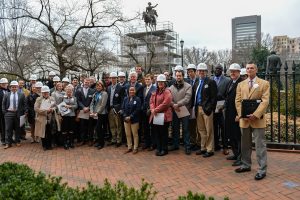
Thanks to everyone who came out for Clean Energy Day 2016
As a result of this new law, by the end of 2016 the State Corporation Commission (SCC) will issue a report on EM+V protocols. VAEEC plans to submit comments to the SCC about this important issue and will keep you posted as we learn more about the process.
Now on to the bad news… in a last minute upset, the Senate Commerce and Labor committee killed Del. Sullivan’s HB 1174, which would have required DMME to issue an annual progress report on where the Commonwealth stands in meeting the 10% by 2020 voluntary goal. We are disappointed in this turn of events, but we hope to work with the patron next year to re-introduce this legislation.
We hope that you were able to join us last week at Clean Energy Lobby Day. It was great to see so many familiar faces in the building talking with their legislators about the importance of energy efficiency!
 This week brings us to the halfway mark- or “crossover”- for the 2016 General Assembly session. All of the energy efficiency bills we are tracking have been heard in their respective committees. Below is a rundown on their statuses. For a summary of each of these bills, check out our legislative tracker.
This week brings us to the halfway mark- or “crossover”- for the 2016 General Assembly session. All of the energy efficiency bills we are tracking have been heard in their respective committees. Below is a rundown on their statuses. For a summary of each of these bills, check out our legislative tracker.
- HB 352 (Del. Ware). At the request of the patron, this bill was carried over until next session.
- HB 1053 (Del. Kilgore). After several deliberations with stakeholders and a robust discussion during the committee hearing, this bill looks very different than the original. The bill directs the SCC to study the potential for establishing uniform EM+V protocols for reporting the impacts of utility energy efficiency programs. This bill narrowly made it out of committee with an 11-to-9 vote.
- HB 1174 (Del. Sullivan). This bill was a late addition to our legislative tracker. After working with the patron and some of our members on slight language modifications, we were able to give this bill our full support. Using a common phrase heard around the General Assembly building, after finding “peace in the valley”, this bill passed out of committee.
- SB 395 (Sen. Alexander). This bill came up in committee on Monday and is the companion bill to HB 1053 (they are the same bill in separate chambers). This bill passed out of committee as well.
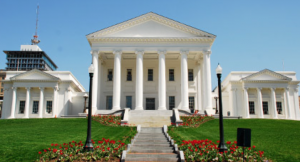 All of the bills above that made it out of committee have also made it out of their respective chamber. Today marks “crossover”, which means that each chamber- house and senate- can only take up bills from the opposite chamber. In essence, we start fresh tracking our bills and testifying on them before their respective committees.
All of the bills above that made it out of committee have also made it out of their respective chamber. Today marks “crossover”, which means that each chamber- house and senate- can only take up bills from the opposite chamber. In essence, we start fresh tracking our bills and testifying on them before their respective committees.
Stay tuned for more updates as the session continues through March 12.
Governor McAuliffe’s stakeholder group on the Clean Power Plan (CPP) met for the third time on Friday, February 12, and began getting into the details of the choices before us. The McAuliffe Administration and Virginia Dept. of Environmental Quality (DEQ) are moving forward with a Virginia implementation plan despite the recent Supreme Court stay on the EPA regulation targeting greenhouse gases.
Energy efficiency should have a strong role in the Virginia CPP implementation plan. The state has high per-capita electricity use, due to decades of low prices and limited programs for efficiency. The Commonwealth has enormous potential for cost-effective energy efficiency savings. How well the state captures this potential for economic gain will depend in large part on the implementation plan Virginia designs.
Stay tuned for more.
###
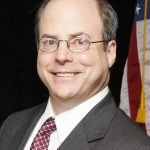 John Morrill is the energy manager for Arlington County. He is on the Governance Board of VAEEC, and he was appointed to the CPP Stakeholder Group on behalf of the Virginia Association of Counties (VACO). John welcomes input from readers: jmorrill@arlingtonva.us
John Morrill is the energy manager for Arlington County. He is on the Governance Board of VAEEC, and he was appointed to the CPP Stakeholder Group on behalf of the Virginia Association of Counties (VACO). John welcomes input from readers: jmorrill@arlingtonva.us
January 20, 2016
“Implementing the U.S. Environmental Protection Agency’s Clean Power Plan would have minimal impact on electricity costs in Virginia, and could even provide savings for ratepayers under some scenarios, compared with projected energy costs in 2030.” Those are among the findings of a white paper released today by the Advanced Energy Economy Institute.
The basis of the paper is an open-access analytic tool called the State Tool for Electricity Emissions Reduction (STEER) that allows state officials and other stakeholders to consider CPP compliance options and their economic impacts.The paper presents the results of two specific scenarios that are representative of multiple runs through STEER.
Echoing previous regional and national studies, this report emphasizes the important role energy efficiency can play in meeting CPP carbon reduction targets:
“Over several runs of the STEER model, energy efficiency and renewable energy are consistently the lowest cost mitigation options for the state. With significant energy efficiency potential, the state has an untapped resource in utility energy efficiency and network efficiency improvements.”
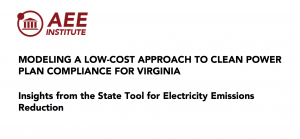 Most likely to turn heads is the report’s finding that with energy efficiency and renewables, these targets can be with minimal impact on electricity costs in Virginia compared with business as usual:
Most likely to turn heads is the report’s finding that with energy efficiency and renewables, these targets can be with minimal impact on electricity costs in Virginia compared with business as usual:
“In Scenario A there is a minor rate increase seen, less than a half of a penny per kilowatt hour, compared with a business-as-usual projection. In Scenario B, the scenario using the SCC’s efficiency potential study, we see a decrease in electric rates compared with business-as-usual. In neither scenario do we see significant costs imposed on Virginia ratepayers as a result of Clean Power Plan compliance. The result is likely due to the substantial contribution to compliance made by low-cost resources such as energy efficiency and renewable energy. The scenarios shown here demonstrate that Virginia can achieve its required carbon reduction targets without imposing significant costs on ratepayers compared with business as usual.”
As the Commonwealth moves forward with CPP compliance plans, reports of this nature provide state leaders with another layer of evidence that the targets are achievable when we harness energy efficiency and renewables.
Side note: The American Council for an Energy Efficient Economy (ACEEE) just released the State Utility Pollution Reduction Calculator Version 2 (SUPR2), a tool that allows anyone to explore the cost and pollution reduction potential of different strategies.
Find out more and get access to ACEEE’s SUPR2 here.
Read the full Advanced Energy Economy Institute white paper here. The press release is also available here.
STEER for VIRGINIA is available for download as an Excel spreadsheet, with user manual, at http://info.aee.net/steer-virginia.
Guest Blogger: Chase Counts, CHP Energy Solutions (VAEEC Member – Business Gold)
January 20, 2016

Energy efficiency programs and policies in Virginia have historically favored detached, single-family homes over multifamily housing. For a brief period around 2009, weatherization funds were used on affordable multifamily housing following the influx of federal stimulus money under ARRA; but currently, Virginia’s weatherization program only serves single family housing and only around two-percent of utility funded residential efficiency programs in Virginia go to multifamily housing. Beyond that, few resources have been available to the 385,000 Virginia households residing in affordable multifamily buildings representing about twelve-percent of the commonwealth’s housing stock.
Affirming this imbalance, the national Energy Efficiency For All project identified Virginia as one of 12 states that could cost-effectively increase energy efficiency in the affordable multifamily sector. Leveraging the established reputation and network of Virginia Housing Alliance to lead the charge, a cross-sector group of energy efficiency advocates, weatherization providers, affordable housing providers, and environmental organizations gathered to form the Virginia Multifamily Energy Efficiency Coalition (MFEEC).

The mission of the Coalition is “advancing policies and programs that provide comprehensive energy efficiency services to Virginia’s multifamily affordable housing stock.” The group has set a goal of “25 / 25 / 2025,” which means the coalition will support policies and programs resulting in an average energy savings of 25-percent or greater in 25-percent of the affordable multifamily housing stock in Virginia by 2025.
The Coalition has identified the following opportunity areas to advance towards their goal:
- Weatherization Assistance Program (WAP)
- Utility driven energy efficiency programs
- Legislature
- State Administration
- Financing Mechanisms
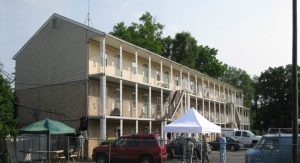
Credit: CHP Energy Solutions Research and Training
Since the inaugural meeting in October 2015, Coalition members have established a presence in each opportunity area. Most recently, weatherization service providers participating as contractors for Dominion Virginia Power’s (DVP) prescriptive energy efficiency programs requested the Coalition represent their interests in a negotiation with DVP regarding extending funds to assist with addressing health and safety issues. The Coalition garnered consensus with the providers and submitted a proposal under consideration by DVP currently. A resolution is anticipated early in 2016 that will help keep Virginia households participating in the DVP programs safe and with peace of mind.
The Coalition has also established a work plan to ensure productive discussions turn into meaningful actions with tangible results. The first initiative is establishing a scorecard to track the progress of reaching the goal of reducing the energy burden of nearly 100,000 households within the next 10 years. The second initiative is to host an event in 2016 that will bring together the energy and housing sectors in Virginia and begin to amplify the foundational efforts of the Coalition.
The goals put forward by the MFEEC are ambitious but attainable. The members are driven, passionate, and collectively understand the various policy, regulatory, and technical obstacles and complications that come with a mission of safely and cost-effectively improving energy efficiency of affordable multifamily housing by 25-percent.
If you are interested in becoming a member or for additional information about MFEEC, please visit the website at www.vamfeec.org or contact Zack Miller at zmiller@vahousingalliance.org.
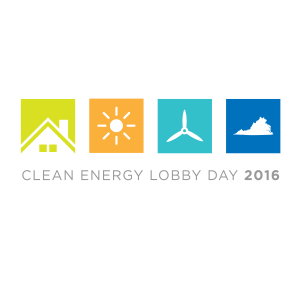 The VAEEC is teaming up with the Maryland, DC, Virginia Solar Energy Industries Association (MDV-SEIA) to host Clean Energy Lobby Day (CELD) 2016 on February 9.
The VAEEC is teaming up with the Maryland, DC, Virginia Solar Energy Industries Association (MDV-SEIA) to host Clean Energy Lobby Day (CELD) 2016 on February 9.
Our focus will be on bringing together the advanced energy businesses of Virginia with key legislators to advocate for clean technology bills in this upcoming legislative session.
Last year, more than 100 business representatives from Virginia’s solar, wind and energy efficiency industries achieved 60+ meetings with legislative offices.
You can download fact sheets on the bills VAEEC is supporting
here.
We’re back with another installment of our popular biannual VAEEC meetings, offering you the opportunity to network with other leaders in the energy efficiency field, get informed and timely updates on issues critical to the industry in the Commonwealth, and help chart the course for the VAEEC.
Working Agenda:
10:15 Welcome and Introduction of new Executive Director (Cynthia Adams, VAEEC Governance Board Chair)
10:25 Report from Governor’s Executive Committee on Energy Efficiency (Hayes Framme, Chief Energy Efficiency Officer)
10:45 Update on the Clean Power Plan (Mike Dowd, Department of Environmental Quality)
11:05 The Impact of Recent Election Results for Virginia’s Energy Future (Invited: Political Commentator Dr. Bob Holsworth)
11:35 Member Spotlight (John Morrill, Arlington County)
12:00 Lunch
12:30 Innovation from Outside the State (Marisa Uchin, Opower)
12:50 Briefing on American Council for an Energy Efficient Economy’s State Scorecard (Mary Shoemaker, ACEEE)
1:05 “Lightning Round” (Utility representatives)
1:25 Commercial PACE and the VA Saves Green Community Loan Program (Bill Greenleaf, Virginia Community Capital)
1:45 Discussion: How will VAEEC Participate in Governor’s Executive Committee Process?
1:55 Wrap up
Register Now!
Lunch will be served, courtesy of our sponsor Community Housing Partners.
Please note the Branch Museum of Architecture and Design in Richmond is a different location than recent meetings. The meeting space is generously sponsored by D&R International.
The meeting is free and open to all. Non-VAEEC members are asked to make a small donation. We encourage you to invite friends and colleagues.
Please feel free to contact us with any questions about the meeting, and we look forward to seeing you on November 12.
The Virginia Department of Environmental Quality (DEQ) is in the middle of a series of informal listening sessions on the U.S. Environmental Protection Agency (EPA) Clean Power Plan to cut carbon emissions (greenhouse gases) from existing power plants that generate electricity from fossil fuels.
The following remarks will be delivered at the Fairfax session tonight by the Chair of VAEEC’s Governance Board; similar remarks have been and will be delivered by Governance Board members at other session. There are three remaining sessions (September 30, 2015, Henrico, VA; October 1, 2015, Big Stone Gap, VA; October 6, 2015, Portsmouth, VA).
“I’m Cynthia Adams, and I am Chair of the Virginia Energy Efficiency Council. I’ve also been appointed by Governor McAuliffe to the Virginia Energy Council and to the Governor’s Executive Committee on Energy Efficiency. In my professional life I’m the co-founder of a business which focuses the residential energy efficiency market. So from all of these perspectives, I am here tonight to advocate for energy efficiency having a central role in Virginia’s Clean Power Plan Compliance.
The Clean Power Plan affords Virginia an opportunity to make sensible energy decisions now that will benefit the Commonwealth for generations to come.
Energy efficiency is one of the primary tools available to help states meet their targets, and when approached from a performance-based perspective can be counted on to lower carbon emissions.
Energy efficiency is the least expensive resource option to meet our energy supply needs. Plus it saves consumers money with lower energy bills.
Energy efficiency is the cleanest option as it represents energy that doesn’t have to be created or consumed, and its implementation reduces multiple pollutants created by other fossil fuel sources.
Energy efficiency is the safest, most reliable option because through demand reduction it improves our energy security by reducing risk and increasing reliability.
Energy efficiency promotes local economic development and job creation. A recent industry census by the Virginia Energy Efficiency Council documented a $2.2 billion energy efficiency industry in Virginia. This industry supports at least 13,000 jobs at more than 500 firms.
The American Council for an Energy Efficient Economy has found that for every $1M spent in building efficiency improvements, 20 jobs are supported. And for every $1M in avoided consumer energy costs, another 17 jobs are supported.
The Virginia Energy Efficiency Council strongly encourages Virginia to include a robust role for energy efficiency in its compliance plan as a way to meet federal guidelines while generating significant economic and environmental benefits for our fellow citizens.
We strongly advocate for a role for the private market to play in helping the state meet its goal, and we stand at the ready to be a resource to the DEQ should the agency have a need.”


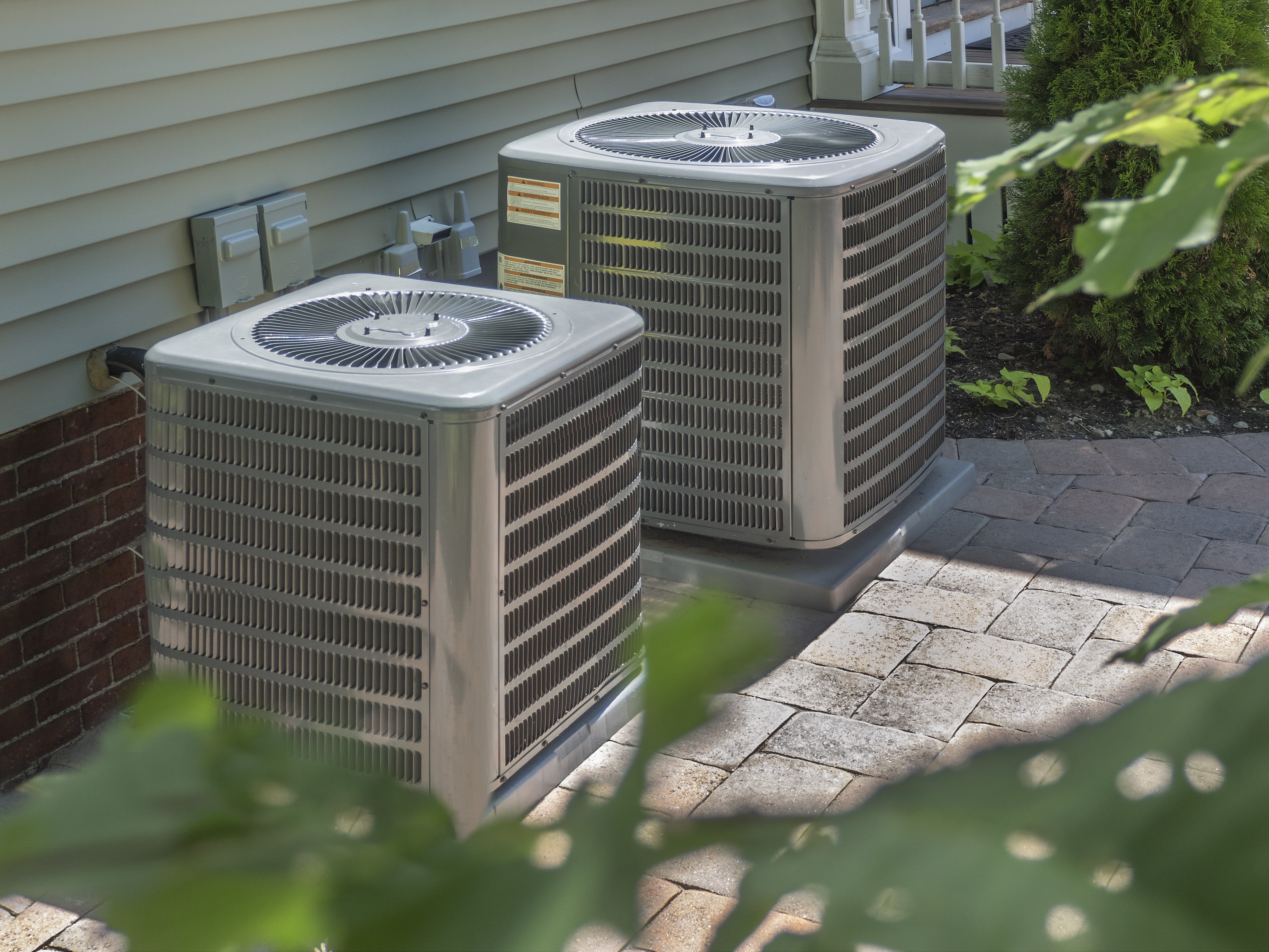


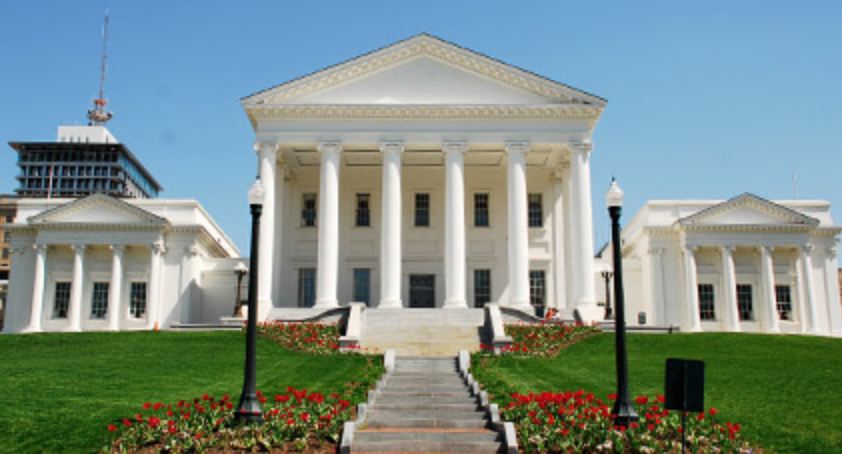









 The VAEEC is teaming up with the Maryland, DC, Virginia Solar Energy Industries Association (MDV-SEIA) to host Clean Energy Lobby Day (CELD) 2016 on February 9.
The VAEEC is teaming up with the Maryland, DC, Virginia Solar Energy Industries Association (MDV-SEIA) to host Clean Energy Lobby Day (CELD) 2016 on February 9.